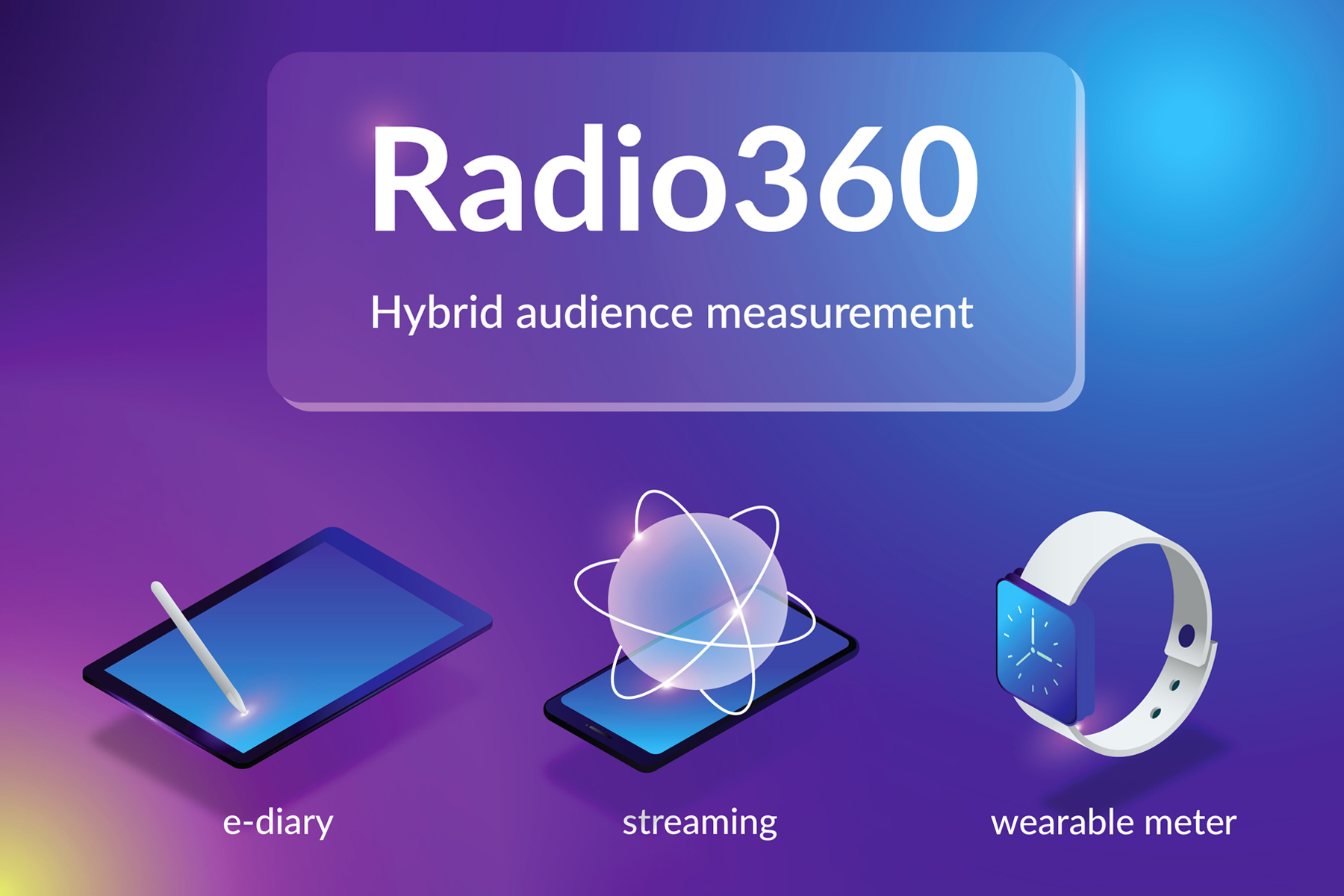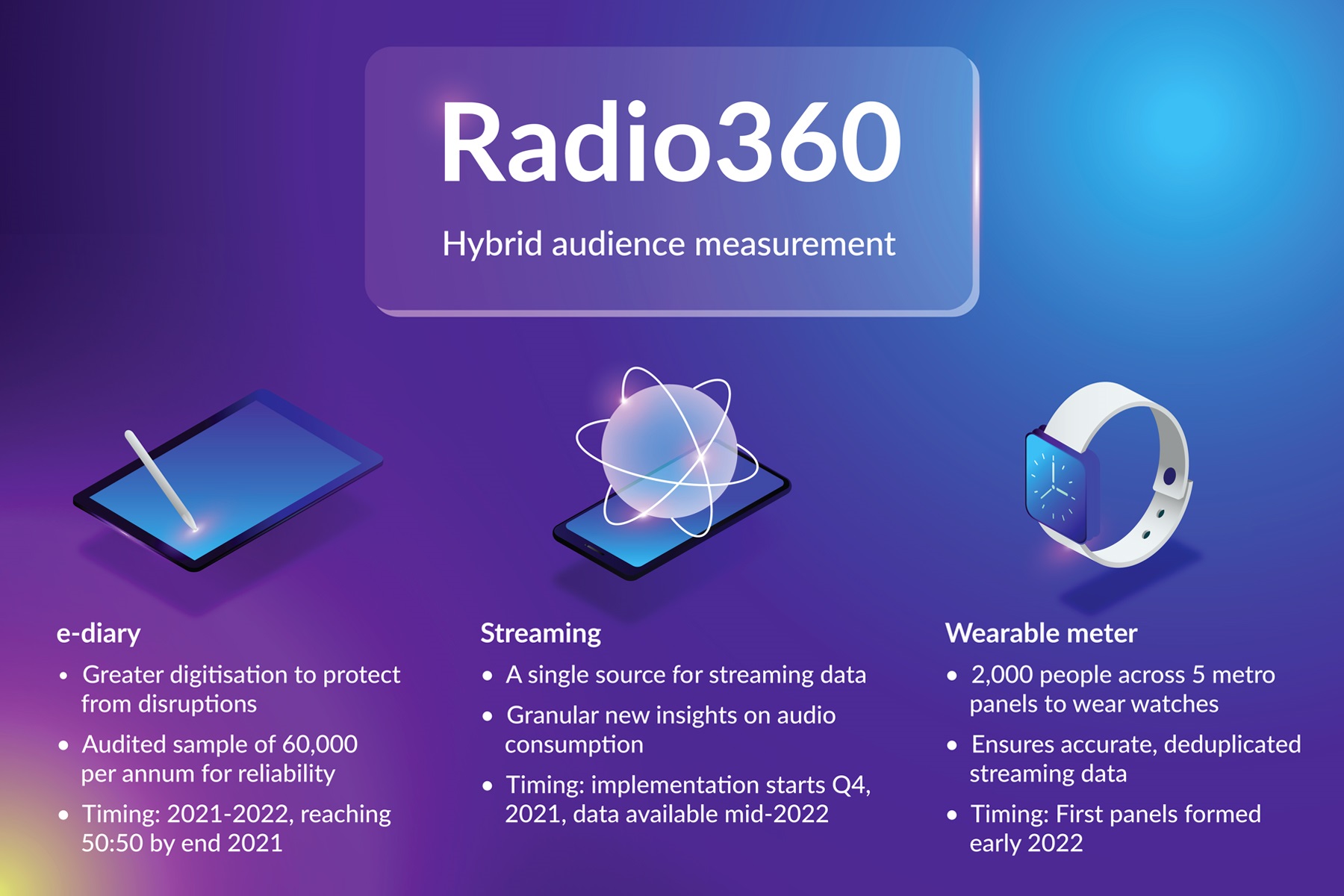Radio ratings overhauled: A move away from paper diaries, integration of streaming data & wearable meters

The radio ratings system as we know it is coming to an end, with Commercial Radio Australia (CRA) announcing a major overhaul.
The long-anticipated Radio360 program will involve the measurement system moving away from paper surveys to predominately rely on electronic diaries (e-diaries).
Live streaming data will also be integrated to provide more information on the size and profile of audiences listening across digital platforms.
In addition, a panel of 2,000 consumers will be asked to wear an electronic watch meter that will detect when the wearer is in listening range of radio broadcast. The device will provide encrypted anonymised information which will be used to validate and ensure the streaming data is accurate and deduplicated.
The rollout, in partnership with measurement provider GfK, will begin late this year and will accelerate throughout 2022.
CRA said the transition away from paper diaries has already begun, and the stronger focus on e-diaries will be steadily increased from Survey 6 this year. The industry body said this will also make the ratings more resilient to COVID disruptions, while maintaining the annual sample size of 60,000.
The integration of streaming audiences, meanwhile, will commence early in 2022. Streaming data will then be integrated with broadcast audience data, accredited via Gold Standard radio analysis software, and made available as part of regular ratings reports.
CRA said these innovations will place Australia at the forefront of radio measurement globally.
Joan Warner, CRA CEO, said the changes are a necessary and natural response to evolving listening habits.
“The overhaul of the radio ratings will future-proof the system and better capture listening everywhere, on every device. Digitisation and innovation adopted across the radio sector have removed any limitations to listening – radio is now genuinely ubiquitous, and we need a measurement system capable of capturing that,” she said.
“By putting the right technology and methodology in place, we are ensuring that we are able to do justice to the full scale and opportunity of our audience in the eyes of advertisers, now and into the future.”
CRA chair and Southern Cross Austereo (SCA) CEO, Grant Blackley, said with growing audiences across digital devices, the onus was on the radio industry to meet the market with measurement that reflects the modern radio listener.
“After consultation with key industry stakeholders, in recognition of the changing behaviour of our growing digital audiences and the need to accurately capture and report on this increasing consumption, the industry has moved forward with GfK in developing a hybrid measurement system,” he said.
“Australians are increasingly consuming radio through digital platforms. More than 2.7 million people are listening to radio each week through their smartphones . The industry’s investment in a hybrid measurement system will allow advertisers to connect to known, targeted audiences at scale.”
CEO of media buying group Omnicom, Peter Horgan, who is also the chair of the Media Federation Australia (MFA), said the industry would welcome the hybrid system.
“We welcome CRA’s move to evolve radio audience measurement to better reflect listening behaviour. As radio consumption becomes increasingly sophisticated, it makes sense that measurement follows suit. This will allow agencies to make more
informed media planning and buying decisions on behalf of their clients, ultimately improving radio campaign effectiveness,” he said.
GfK also noted its excitement, with managing director across Australia and New Zealand, Dr Morten Boyer, drawing attention to Australia’s place in the radio landscape.
“GfK is excited to partner with CRA to make hybrid radio audience measurement a reality following a rigorous and thorough testing and development period. Australia is one of the strongest radio markets in the world and the first to embrace this exciting approach, both from a methodological and data science perspective.”
CRA’s Warner said the CRA would continue to collaborate with key industry stakeholders throughout the transformation process.




About time we caught up with the rest of the world. Results will be more accurate this way. And maybe 2Day will rate worse.
The forefront of radio innovation? I’m sorry but what you’re describing it called catching up to the market. Perhaps an overall of the CRA board could inject some modern technologies and innovation into a medium that needs to change.
As a listener to Aussie radio (and many other countries’) from outside Australia, I sense this will mean that at some point in the near future, most of the stations I listen to from your side of the world will be blocked. There won’t be any incentives for me continuing to listen.
Well, it was nice knowing you all.
2GB will do much better in the ratings when we get rid of paper diaries because old people have no idea who they are listening to
Really exciting to see this development. A huge congratulations to the team at GFK for continuing to innovate and to the team at CRA for being on the front foot of this.
Generations of programmers have been brought up on recall. Will be interesting to see how those same people fare now everything they know is thrown out the window.
Maybe we’ll see some ACTUAL innovative thinking; somehow I doubt it – the PPMs in the US have led to even more homogenised radio than what we have in Australia (as if that’s even possible), with even less talking, extremely tight rotations, and a general decline in quality standards.
When the US shifted to the PPM ratings model, it gave the radio industry an ugly insight to how radio is actually consumed. Who would have thought that commercials and mindless talk actually turn listeners off?
As an overseas listener that has just been geoblocked out of the App of an Australian radio station – I need to listen via their website which drops out with every call, use of another app while listening. Thus I have to log in again and again to continue listening – while this be counted as one or several listeners?
@hannah, front foot or two left feet?
CRA are in no way on the front foot with this, this is a welcome update but let’s not pretend it’s not 5 or 10 years behind Spotify, Amazon Music, YouTube Music etc.
Radio owners would be mildly concerned as this might show radio (some markets) have less listeners than what they have been telling agencies/clients for years.. Especially in the younger demos…
The wearable meter will prove interesting because it will measure casual and incidental listening people most likely do not record in a diary.
For example, you are sitting in an office waiting for an appointment. The office is playing a station to which you do not normally listen, you are there for 20 minutes and are a listener for that time.
That type of incidental listening could collectively be significant. Currently, participants may not record such information because they don’t consider themselves a listener under those circumstances.
The other issue is accuracy. The electronic meter may well expose deficiencies physical, even e-diaries, cannot. People may be listening for longer or shorter periods. The current system relies on participants accurately recording information whilst the wearable meter takes, in theory at least, the fallible human element out of the equation.
I shall observe with interest.
If 60000 people will be sampled, why only 2000 with the new technology? Surely if it works they all should be using it. I’ve always had a big problem with the accuracy of the diary system, and I was even chosen to fill one out a few years ago and put in heaps of times I didn’t actually listen because I knew it would benefit radio mates. Can’t do that with the watches.
@Hannah, unlike many digital platforms, the radio survey collection and analysis of the data is conducted by an independent third party. There is currently no means of holding digital platforms to account nor of forcing transparency regarding claims of user engagement and audience size.